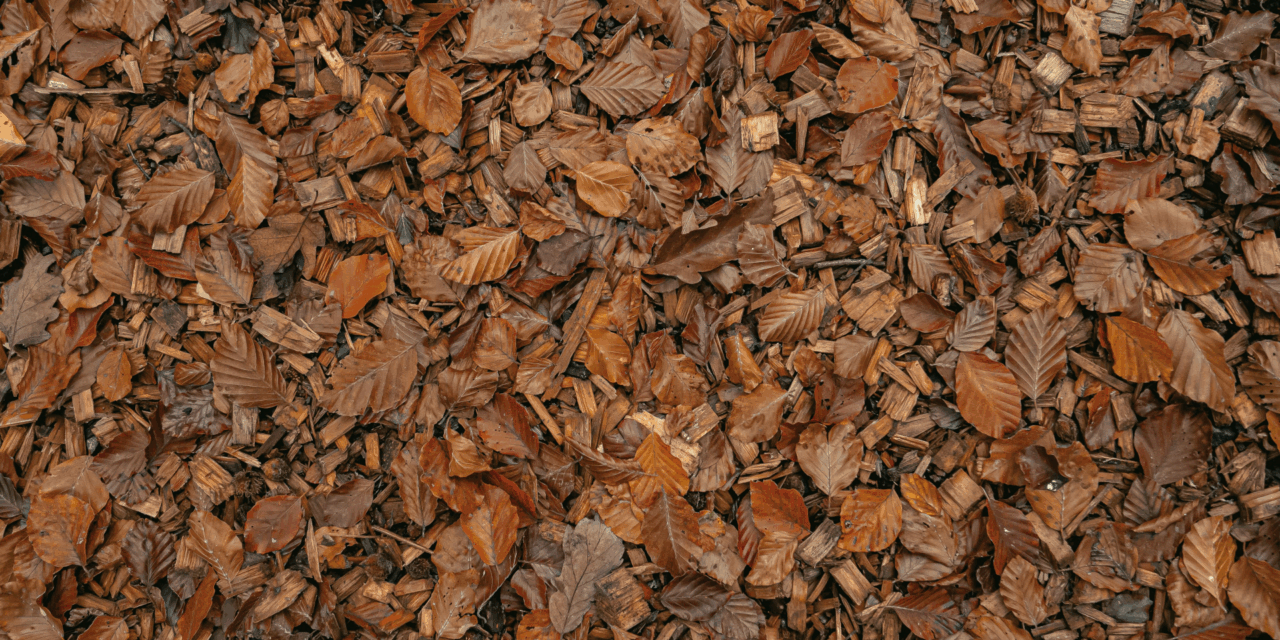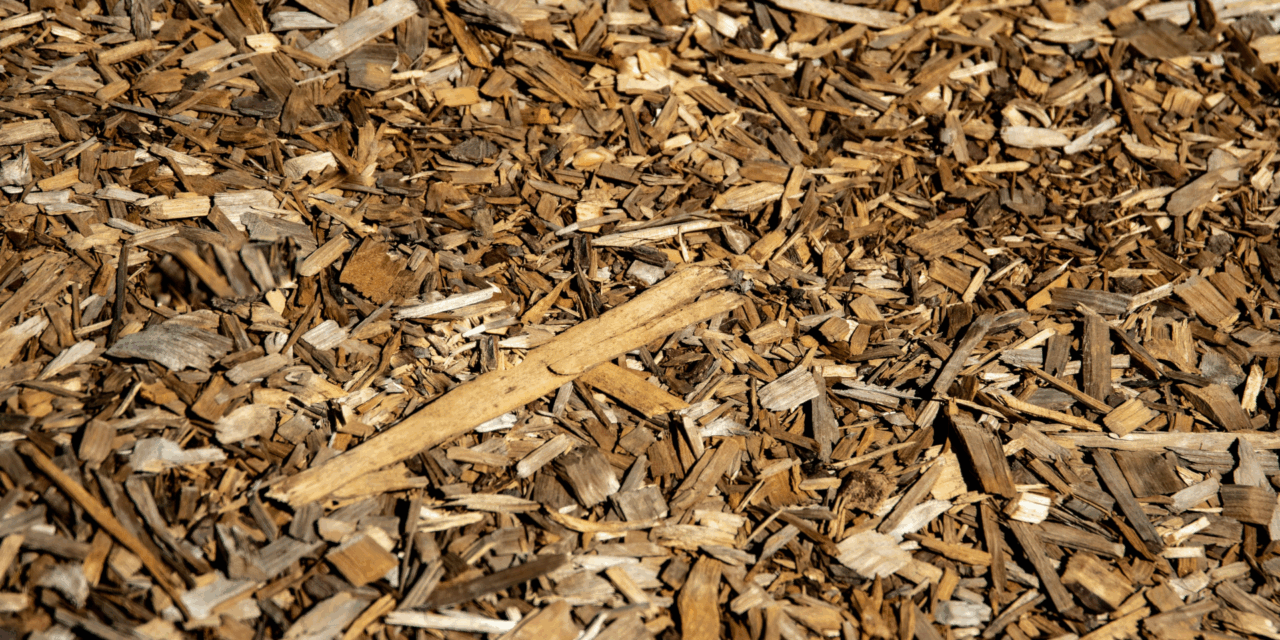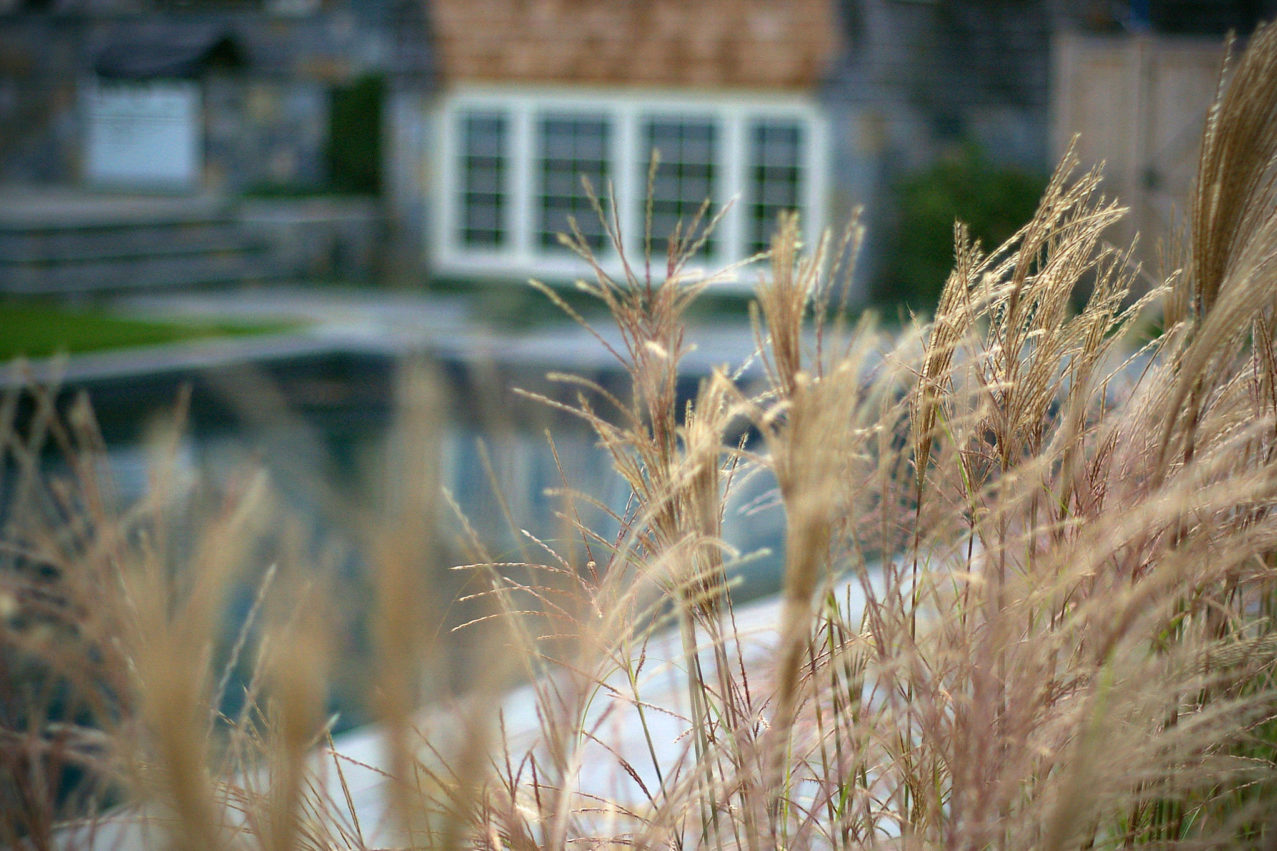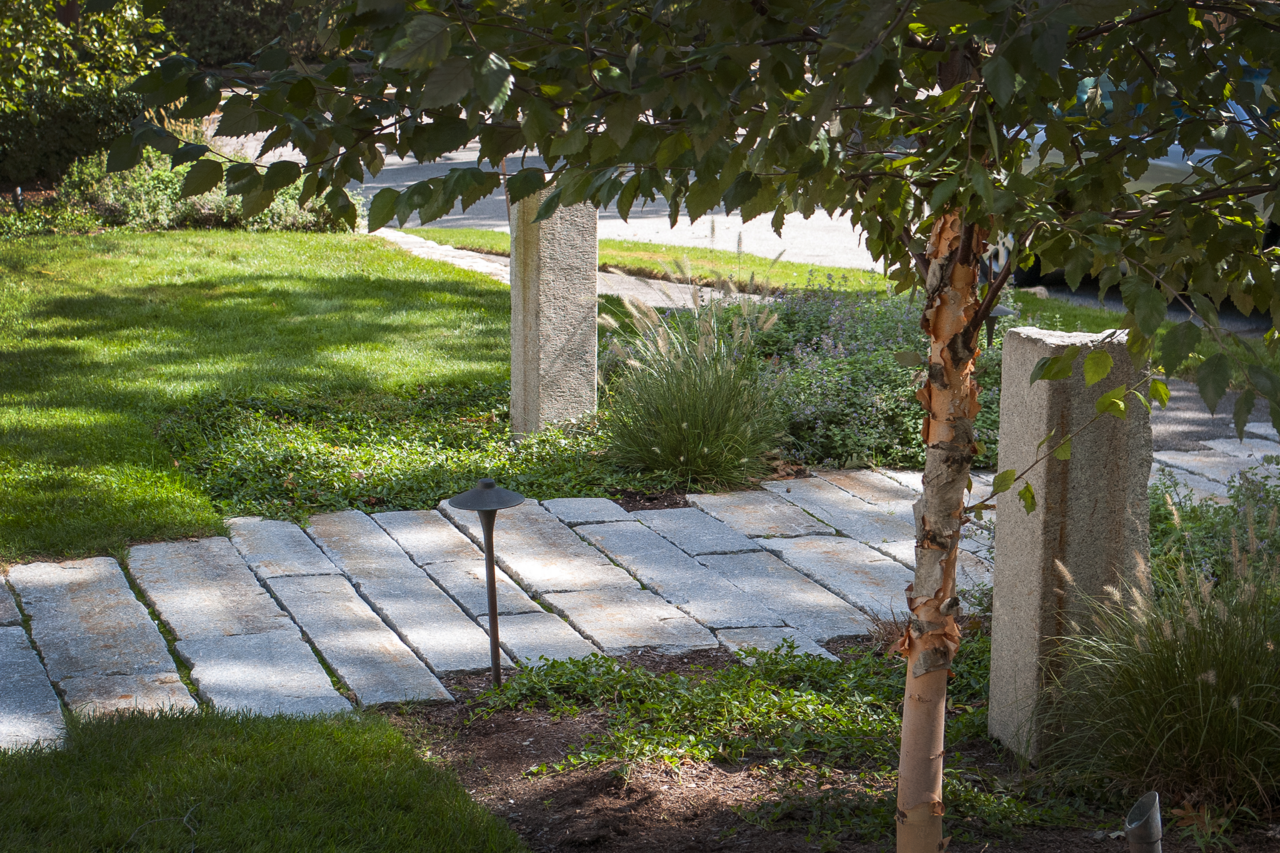As a homeowner in the Greater Boston area, choosing the right mulch for your garden beds, shrub borders and foundation plantings is more than a cosmetic decision. The right mulch affects soil health, moisture retention, weed suppression, insulation in winter and aesthetics year-round. In this post we’ll revisit the classic comparison of leaf vs. bark mulch and augment it with a deeper dive into other mulch types, regional recommendations (for New England’s climate), statistics, FAQs, and actionable guidance you can take to your next landscape meeting. At the end, you’ll understand how to match mulch type to your property, plant palette and maintenance goals — and when to call the team at a Blade of Grass for a free consultation.
“Mulch helps conserve and extend available water, protects the soil from erosion, reduces competition by suppressing weeds, moderates temperature extremes and acts as a barrier or visible marker of gardening beds.” — United States Department of Agriculture.
Key Takeaways
- Mulch is a foundational element for aesthetics, plant health, moisture control and weed suppression — especially in New England.
- Leaf mulch is very good for building organic matter and woodland-style beds; bark mulch is superior for durability, polished finish and formal settings.
- Other types (pine straw, stone, compost) each have advantages and should be matched to specific site needs, plant palettes and maintenance preferences.
- Regional factors (climate, soil type, slope, snow/ice) affect the optimal choice of mulch in the Greater Boston / Metro West area.
- Proper application (depth, spacing from trunks, refresh cadence) is just as important as material choice.
- Maintenance and refresh planning ensure that your investment in mulch yields long-term benefits rather than problems.
Why Mulch Matters in New England Landscapes
Before selecting a specific type of mulch, it’s worth remembering why mulch is so important—especially in a zone with cold winters, variable spring soils and humid summers like Greater Boston.
Key benefits of mulch:
- Suppresses weed growth by limiting seed germination and sunlight.
- Conserves moisture by reducing evaporation from the soil surface.
- Insulates the soil, moderating extreme temperature swings (important for plant roots in freezing/thawing soils).
- Improves soil structure and adds organic matter when organic mulches decompose.
- Enhances aesthetics, giving beds a finished look and helping delineate zones.
Statistic: In one survey of 220 homeowners, 67 selected chipped or shredded wood mulch as their top choice.
This suggests that among homeowners, wood-based mulches remain very popular.
That said, choosing the wrong mulch—or applying it incorrectly—can lead to problems (compaction, nitrogen tie-up, excessive moisture retention or erosion on slopes). Understanding the trade-offs is key.
Comparing Mulch Types: Leaf vs Bark … and then Some
Below is a detailed breakdown of major mulch categories with recommendations for which applications, soils and regions they perform best (or worst) in.
1. Leaf Mulch
Definition: Shredded or chopped deciduous tree and shrub leaves applied as mulch.
Pros:
- Naturally mimics woodland floor and invites beneficial organisms like earthworms.
- Easier to apply (lightweight)
- Breaks down relatively quickly, adding organic matter to the soil
Cons:
- Breaks down quickly — needs more frequent replenishment.
- Because it’s lighter, it can shift, blow away or wash out more on slopes or heavy rain events.
- Some insect habitat or seed-bank issues may occur if not shredded.
- May compact more if applied too thickly (especially in shaded, damp spots).
Best use-cases for Greater Boston area:
- Under shrubs or in beds where you want to build soil organic matter.
- In shady areas where light leaf cover integrates well with woodland aesthetic.
- When budget is tighter and you want a more “natural” look.
Scenarios to avoid:
- Steep slopes where lightweight leaf mulch may wash away.
- Very heavy clay soils that already struggle with drainage (because the decomposition process may slow infiltration).
Verdict: Leaf mulch is excellent when you are building soil health and want a natural look, but less ideal when durability and stability are top priorities.
2. Bark Mulch
Definition: Chips or shredded bark from various tree species (e.g., pine, cedar, hemlock, mixed hardwood).
Pros:
- Longer-lasting than many organic mulches because it decomposes more slowly.
- More resistant to wind, wash-out and movement (good on slopes or exposed beds).
- Often available in different colors/textures (enhancing aesthetic appeal).
- Provides good structure and allows for air and water movement between pieces when coarser grade.
Cons:
- Some types may tie up soil nitrogen during decomposition (especially fine dust from fresh bark).
- Some bark mulches can raise soil pH (depending on species).
- Heavier to apply (labor and supply cost may be higher).
- Over time, may show “dust” or fade, and eventually will need replenishment.
Best use-cases in Greater Boston:
- Formal foundation planting beds, driveway borders or high-visibility landscapes where you want a refined, uniform finish.
- On slopes or drainage swales where durability and wash-resistance matter.
- In dry soils or sunny exposures where you want slower breakdown and less frequent replacement.
Scenarios to avoid:
- Very sandy soils where you might prefer a mulch that decomposes faster and builds organic matter.
- Areas where very frequent reapplication is unwanted (i.e., if budget for replacements is tight).
Verdict: Bark mulch is a strong choice for structure, durability and visual polish — ideal for luxury landscapes, but you should plan for eventual replenishment and avoid fresh fine bark in nitrogen-deficient soils without amendment.
3. Other Mulch Types (and How They Compare)
To help you make the most informed choice, we’re expanding beyond the “leaf vs bark” to include other available mulch types, how they differ, and when they’re appropriate.
a) Pine Straw / Pine Needles
Description: Dried pine needles, often used in southeastern U.S., but also available in New England.
Pros: Lightweight yet stable, good on slopes, good for acid-loving plants (e.g., azaleas, rhododendrons) since needles maintain some acidity.
Cons: May break down faster than bark chips; may shift in open extremely windy sites; not always locally sourced (transport cost).
Best-Use: Under acid-loving shrubs and in beds where you want a unique texture.
Caution: Because New England winters include freeze-thaw cycles and snow plows, ensure pine straw is well anchored or blended with heavier mulch where snow removal is likely.
b) Inorganic Mulches (Stone, Gravel, Rubber, Landscape Fabric)
Description: Non‐organic materials such as stone chips, gravel, rubber nuggets or synthetic covers.
Pros: Extremely long lasting, minimal decomposition, very low maintenance, great for xeriscape or contemporary hardscape settings.
Cons: No nutrient addition to soil, may reflect heat (less ideal near roots), can complicate future planting, may be more expensive to install.
Best-Use: Permanent beds, high-traffic outdoor living zones, drought-tolerant or minimalist landscapes.
Caution: In moist New England soils, stones may retain cold or reflect heat in ways that stress plants; also ensure drainage is adequate since stone offers little organic improvement.
c) Compost & Leaf Mold
Description: Finely composted organic matter used as mulch layer or incorporated into beds. Often used in vegetable or high-end planting zones.
Pros: Adds nutrients, improves soil organic matter and structure, great for perennials or new planting zones.
Cons: Breaks down quickly (so needs replenishment), may be pricier, may carry weed seeds if not well composted.
Best-Use: New planting beds, high-value shrub or perennial zones where soil health is critical.
Caution: Not always appropriate for finished decorative beds where uniform aesthetics are primary; also may require more frequent refresh.
d) Wood Chips / Tree Bark Nuggets
Description: Larger-chunk wood chips from tree prunings/forestry; similar to bark but larger pieces.
Pros: Very lasting, natural look, good for informal or woodland-style settings.
Cons: More bulky, can make planting smaller or fine-textured plants harder to establish; may trap moisture if too deep.
Best-Use: Under mature trees, woodland edges, large estate properties where maintenance is less frequent.
Caution: Avoid around delicate perennials or tight ornamental beds where texture matters.
Regional Considerations for the Greater Boston / New England Market
Regional factors play a major role in choosing the right mulch for Greater Boston and the broader New England area. Winter freeze–thaw cycles and snow cover require mulches that drain well, resist compaction and stand up to plowing, making heavier bark chips or anchored pine straw more reliable than lightweight leaf mulch in high-traffic zones. Local soil conditions also influence selection; many MetroWest and Worcester County properties have dense or clay-based soils, so leaf mulch or compost can help build organic matter, while slower-decomposing bark mulches reduce the risk of “mulch volcanoes” and compaction around shrubs.
A property’s overall look matters as well. Luxury homes often favor a refined, consistent finish, so dyed bark or premium wood chips are common, whereas natural landscapes benefit from leaf mulch or native-style wood chip blends. Maintenance expectations should also inform the choice: homeowners who prefer a low-maintenance approach may opt for longer-lasting mulches that typically require refreshing every two to three years instead of annually. Finally, slope and drainage conditions need careful consideration. Heavier mulch performs better on inclines, while extremely light leaf mulch can wash away. In drainage zones or near foundations, maintaining a moderate mulch depth—generally two to three inches—and keeping material away from trunks or siding helps prevent moisture-related issues.
Mulch Depth, Installation & Maintenance Tips
Proper mulch installation and upkeep greatly influence how well your landscape performs. Mulch should be applied at a depth of two to three inches; thicker layers of four inches or more can restrict water movement, reduce oxygen and create root issues. It’s equally important to keep mulch away from plant crowns and tree trunks, since “volcano mulching” traps moisture and can lead to rot or rodent damage. Over time, mulch naturally thins and fades, so plan to refresh it when the layer has diminished by about an inch or when the color or texture loses its visual impact—especially with dyed or color-enhanced products.
In areas with slopes or drainage swales, mulch needs added stability; heavier materials, a mix of leaf and bark, or the addition of edging can help prevent washout. When possible, bulk delivery is both more cost-effective and environmentally friendly compared to bagged mulch. If you work with a landscape company, consider bundling mulch care with edging and bed cleanup as part of a maintenance plan for consistent results.
Frequently Asked Questions (FAQs)
Q. How often should I refresh mulch?
A: For many organic mulches in New England, refresh every 1–2 years is typical. Longer-lasting types like coarse bark chips may last 2–3 years before needing full replacement.
Q. Does mulch deplete nitrogen from soil?
A: Some fine woody mulches (very fresh bark) can temporarily tie up nitrogen as they decompose. If your soil is already low in nitrogen, consider an initial light fertilization or choose a mulch that decomposes faster.
Q. Can I use stone or gravel instead of organic mulch?
A: Yes — stone offers ultra-low maintenance and longevity. But it doesn’t contribute organic matter or improve soil structure, and may reflect heat in summer or retain cold in winter. It also may be less suitable for high-end planting beds where soil health is key.
Q. Is leaf mulch messy or prone to pests?
A: When shredded and applied properly, leaf mulch is beneficial and supports soil health. If applied in crinkled large leaves/mats it may trap moisture or harbor pests. Ensure proper depth (2-3 inches) and avoid direct contact with trunks.
Q. How deep should mulch be applied near trees vs flower beds?
A: For trees, a layer 2–3 inches is usually sufficient. Avoid piling up root collars. For ornamental beds, 2–4 inches is standard. Always leave a 2-3 inch gap between mulch and trunk/stem.
Q. Does mulch help during drought?
A: Yes — mulch reduces evaporation and conserves soil moisture, which is increasingly important in New England summers. For example, some studies show mulch can reduce evaporation significantly.
Q. What mulch is best for acid-loving plants (e.g., azaleas, rhododendrons)?
A: Pine straw or pine-bark based mulches (which maintain slightly lower pH) are often preferred for such plants. Mixed hardwood bark may raise pH slightly over time.
Q. Are dyed mulches safe or okay for premium landscapes?
A: Dyed mulches are widely used for aesthetic effect and color uniformity. For high-end properties, they can provide a clean finish. Make sure the dye is plant-safe and consider the need for replenishment of color over time.
Ready to Mulch?
If you’re eager to elevate your landscape’s performance and beauty – whether you’re refreshing mulch across foundation beds, rethinking slope zones or want a full design-build approach – contact us at a Blade of Grass. Let’s schedule a free consultation to evaluate your property’s specific needs in the Greater Boston / Metro West region and recommend the mulch strategy (and full landscape plan) that aligns with your goals, budget and desired aesthetic. Reach out today and let’s bring your landscape vision to life.




